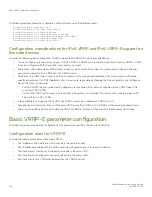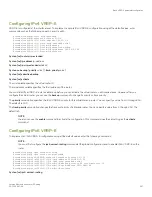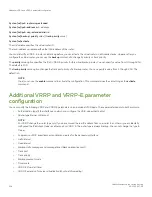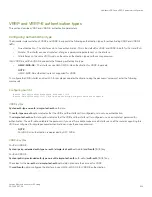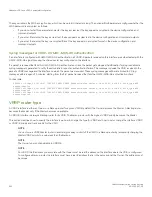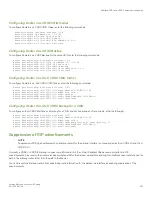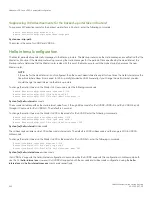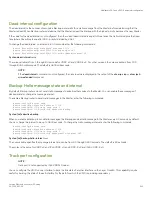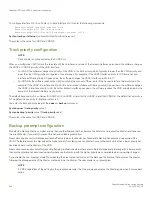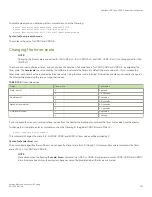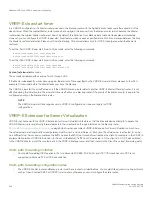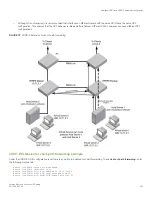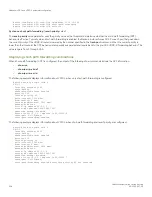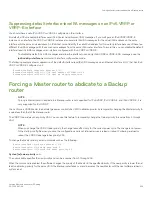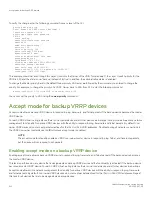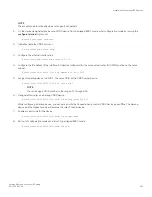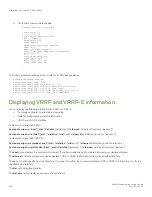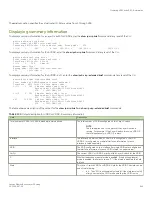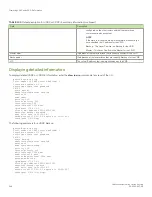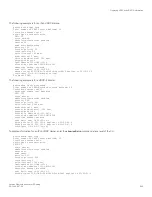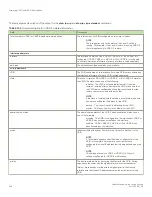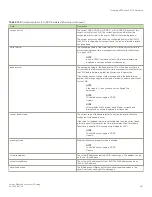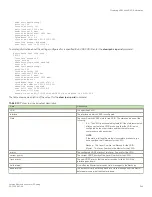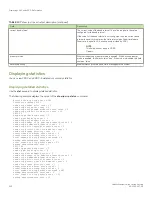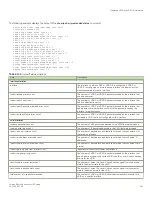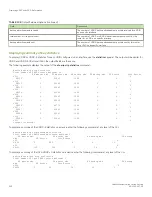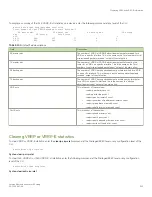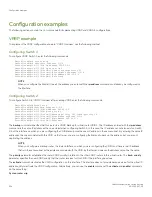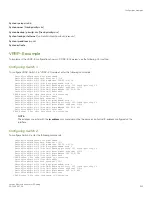
To verify the change, enter the following command from any level of the CLI.
device# show ip vrrp
Total number of VRRP routers defined: 1
Interface ethernet 1/1/6
auth-type simple text password
VRID 3
state backup
administrative-status enabled
version v3
mode non-owner(backup)
priority 110
current priority 110
hello-interval 1000 msec
dead-interval 0 msec
current dead-interval 3500 msec
preempt-mode true
ip-address 172.21.3.1
virtual mac address 0000-5E00-0103
advertise backup: enabled
next hello sent in 00:00:26.1
master router 172.21.3.1 expires in 00:00:02.7
track-port 1/4/1-1/4/4(up)
This example shows that even though this Layer 3 switch is the Owner of the VRID ("mode owner"), the Layer 3 switch priority for the
VRID is 110 and the state is now "backup" instead of "active". In addition, the administrative status is "enabled".
To change the Master priority back to the default Owner priority 255, enter
no
followed by the command you entered to change the
priority. For example, to change the priority of a VRRP Owner back to 255 from 110, enter the following command.
device(config-if-1/1/6-vrid-1)# no owner priority 110
You cannot set the priority to 255 using the
owner priority
command.
Accept mode for backup VRRP devices
Accept mode allows a backup VRRP device to respond to ping, traceroute, and Telnet packets if the backup device becomes the master
VRRP device.
For each VRRP virtual routing instance there is one master device and all other devices are backups. Accept mode allows some network
management functionality for backup VRRP devices with the ability to respond to ping, traceroute, and telnet packets. By default, non-
owner VRRP devices do not accept packets destined for the IPv4 or IPv6 VRID addresses. Troubleshooting of network connections to
the VRRP non-owner master device is difficult unless accept mode is enabled.
NOTE
The accept mode functionality enables a VRRP non-owner master device to respond to ping, Telnet, and traceroute packets,
but the device will not respond to ssh packets.
Enabling accept mode on a backup VRRP device
Enabling accept mode allows a backup VRRP device to respond to ping, traceroute, and Telnet packets if the backup device becomes
the master VRRP device.
This task is performed on any device that is designated as a backup VRRP device and the functionality is activated if the backup device
becomes a master VRRP device. For each VRRP virtual routing instance there is one master device and all other devices are backups.
Accept mode allows some network management functionality for backup VRRP devices with the ability to respond to ping, traceroute,
and telnet packets. By default, non-owner VRRP devices do not accept packets destined for the IPv4 or IPv6 VRID addresses. Repeat
this task for all devices that are to be designated as backup devices.
Accept mode for backup VRRP devices
FastIron Ethernet Switch Layer 3 Routing
540
53-1003627-04
Summary of Contents for FastIron SX 1600
Page 2: ...FastIron Ethernet Switch Layer 3 Routing 2 53 1003627 04 ...
Page 16: ...FastIron Ethernet Switch Layer 3 Routing 16 53 1003627 04 ...
Page 20: ...FastIron Ethernet Switch Layer 3 Routing 20 53 1003627 04 ...
Page 142: ...FastIron Ethernet Switch Layer 3 Routing 142 53 1003627 04 ...
Page 150: ...FastIron Ethernet Switch Layer 3 Routing 150 53 1003627 04 ...
Page 200: ...FastIron Ethernet Switch Layer 3 Routing 200 53 1003627 04 ...
Page 214: ...FastIron Ethernet Switch Layer 3 Routing 214 53 1003627 04 ...
Page 350: ...FastIron Ethernet Switch Layer 3 Routing 350 53 1003627 04 ...
Page 476: ...FastIron Ethernet Switch Layer 3 Routing 476 53 1003627 04 ...
Page 588: ...FastIron Ethernet Switch Layer 3 Routing 588 53 1003627 04 ...

